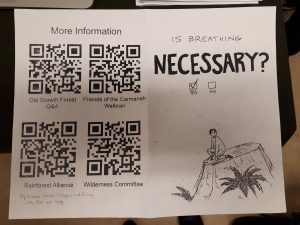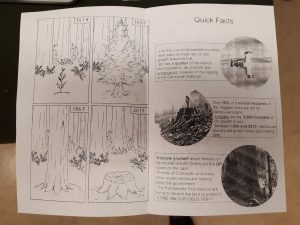As part of our Multiliteracies class, we had the opportunity this past month to work with a group of students from Esquimalt High School on a project that they were passionate about. This was an open inquiry-style project, and the projects that grew out of it represented emergent learning. I had the opportunity to work with another of the pre-service teachers in the program on a project that interested both of us. I learned a lot during this experience about how to relate to today’s students, how to build trust and rapport with them, and how to enable them to do work that they couldn’t do on their own by providing effective scaffolding and collaborations.
Our Students

Image from PxHere (Public Domain).
My colleague and I ended up attaching ourselves to a group of four students who were all passionate about organizing a class trip to Carmanah-Walbran Provincial Park. All four had strong opinions about the logging of old-growth forest on Vancouver Island, and wanted their classmates to see the beauty of the forest (and the devastation of the surrounding clear cuts) for themselves. These students were part of a challenge program, and so were already very high-achieving youth that are in their final year of high school. In addition to this project, they are all dealing with the stress of graduating, applying to university, and finishing their year with strong grades. They were fantastic resources for us, as they knew the school and the staff within it well, and were able to access the resources within the school that we needed.
As challenge students that are very involved in their school and community, our group were already quite comfortable interacting with adults, which made it easy to establish a respectful rapport with them. They were able to clearly articulate their ideas, and were also very aware of their own strengths. With very little prompting, they were able to put together a plan of action and self-organize into loose but interchangeable roles: the researcher, the artist, the designer, and the logistics handler.
Our Project
The group agreed that their goal in this project was to win their class over to the cause, in order to prepare a field trip proposal to take to the administration for approval. As outdoor educators, my colleague and I were both able to advice on the kinds of logistics required, as well as offer suggestions toward a ‘save the forest propaganda campaign’. This campaign came together as follows:
- The students contacted a researcher at the Pacific Forestry Center and arranged for him to come in and talk to the class about the importance of preserving old growth rainforest.
- The students independently researched and produced multimodal publication (called a ‘zine, pictured below) aimed at informing their classmates about the issues facing the Carmanah and Walbran valleys.
- With minimal input, the students explored arrangements for camping accommodations, transportation, and possible dates for the field trip, to begin the process of their application.

Front and back cover of ‘zine. Photo by me.

Inside of ‘zine. Photo by me.
Opportunistic Collaboration
It so happens that another pre-service teacher in our cohort is a member of the Friends of Carmanah Walbran collective, and was in possession of some cedar with which the organization was planning to make trail marker signs. We were able to take advantage of the opportunity for our students to design these signs themselves, as the colleague I was working with is also a visual artist and had access to the CNC router at UVic’s Digital Fabrication Lab. Using a free design program, our students produced another product: two trail marker signs that the class will take with them on their field trip and install in the Carmanah (pictured below).

Photo by me.
This was a phenomenal experience, and I hope that our students keep in touch about the results of their efforts!
Leave a Reply